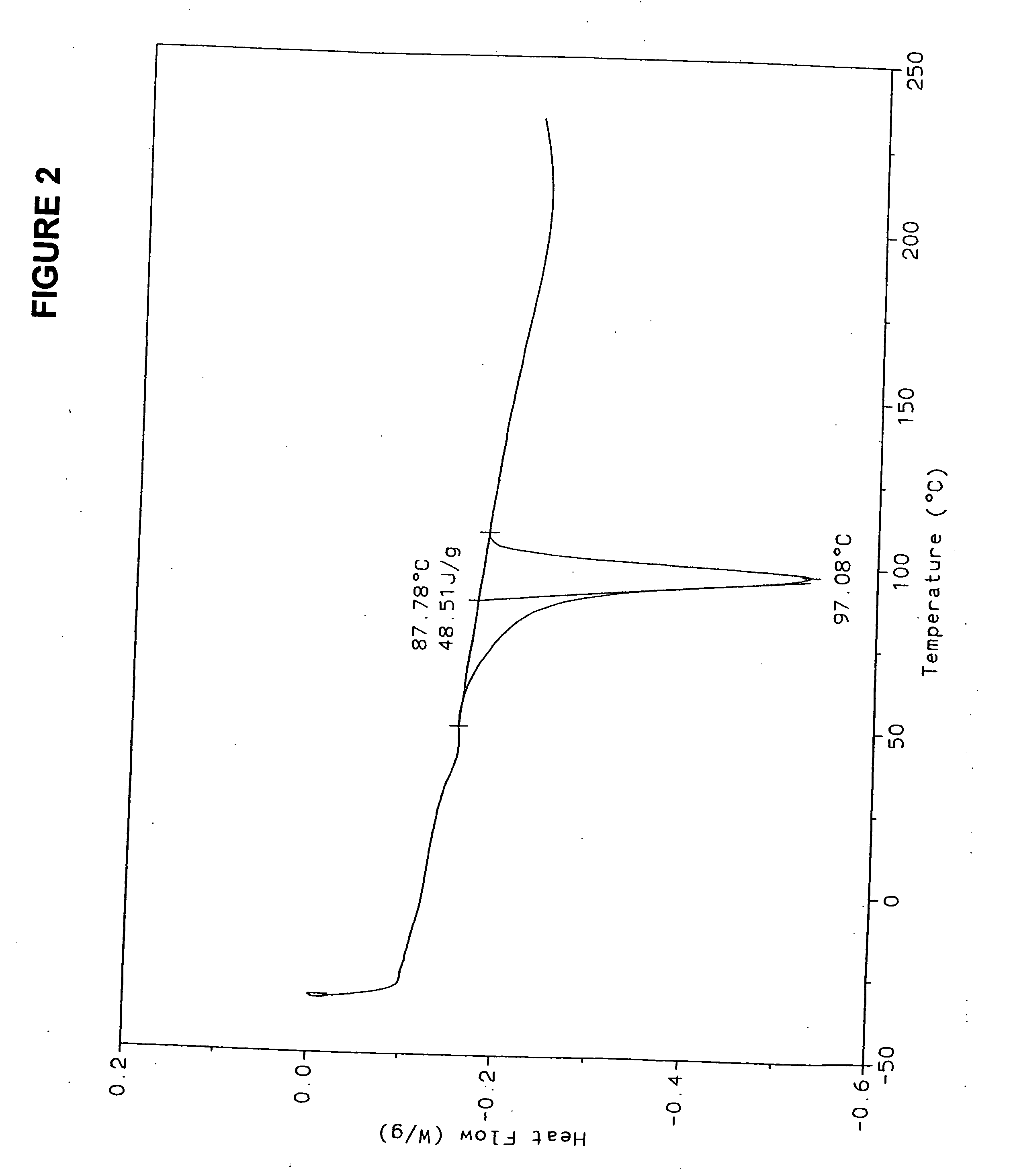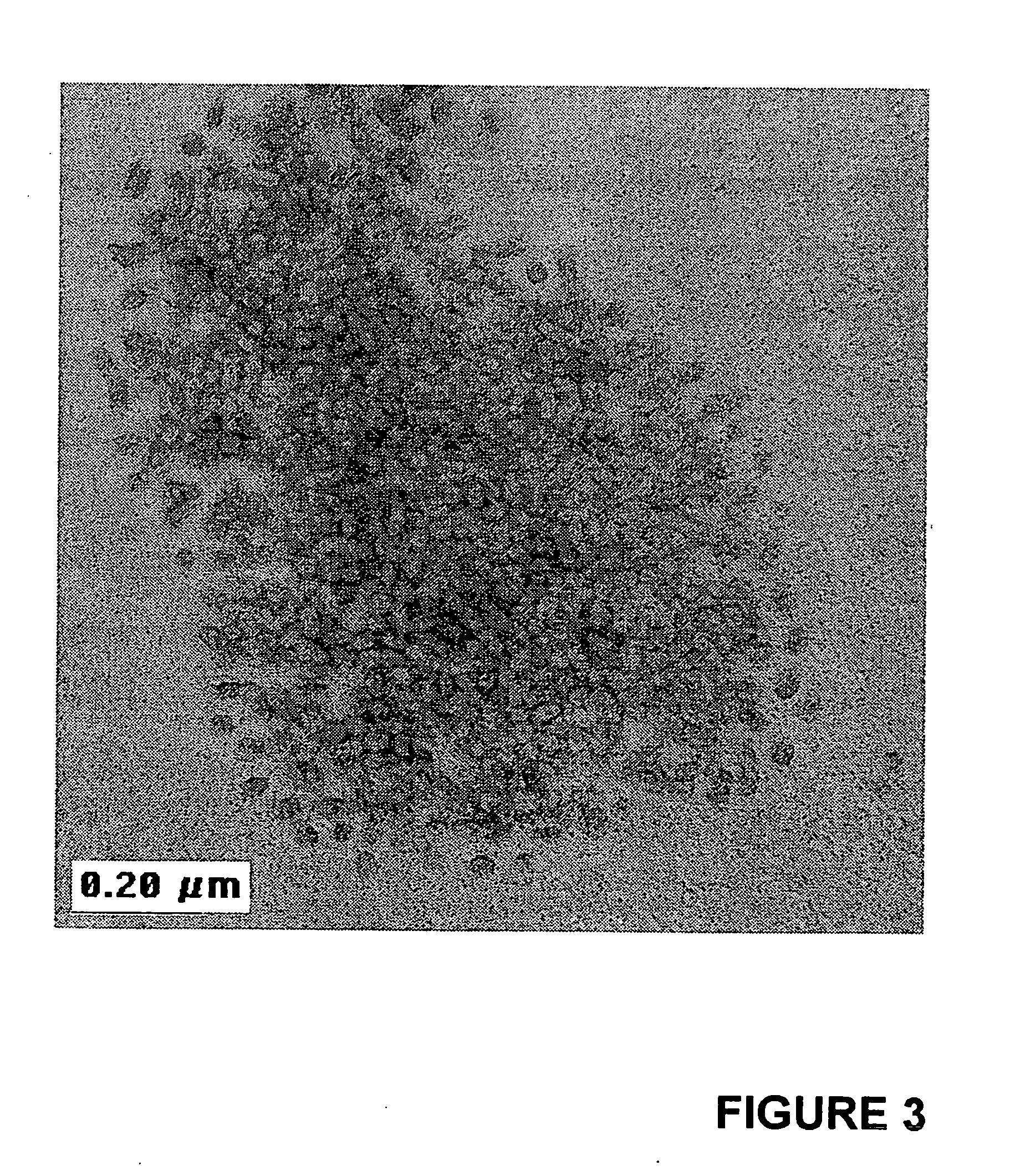Nano-particle preparation and applications
a technology of nanoparticles and nanoparticles, which is applied in the field of polymer nanoparticles, can solve the problems of difficult control of the size of nanoparticles during polymerization and/or the surface characteristics of such nanoparticles, the degradation of matrix materials, i.e. rubber, characteristics, etc., and achieves high hysteria, good tensile strength, and strong resistance to creep
- Summary
- Abstract
- Description
- Claims
- Application Information
AI Technical Summary
Benefits of technology
Problems solved by technology
Method used
Image
Examples
examples
Preparation of St-Bd Nano-Particles
[0089] Unless otherwise specified, an 8 L reactor equipped with external jacked heating and internal agitation was used for all polymerizations. 1,3-Butadiene was used as a 22.0 or 21.1 weight percent solution in hexane (Bridgestone / Firestone Polymer Co., Akron, Ohio). Styrene was used as a 33.0 wt. % solution in hexane (Bridgestone / Firestone Polymer Co., Akron, Ohio), and n-butyllithium was used as a 15 wt % solution in hexane (Bridgestone / Firestone Polymer Co., Akron, Ohio). The antioxidant butylated hydroxytoluene (BHT) (Aldrich Chem. Co., Milwaukee, Wis.), was used as an approximately 17 wt % solution in hexane. Technical grade divinylbenzene (DVB), (80% as a mixture of isomers, Aldrich) was passed through a column of inhibitor remover under N2 before use. Neat bis-oxalanyl propane (OOPs) (Aldrich), was similarly treated and used as a 1.6 M solution in hexane, stored over calcium hydride.
examples 1-3
Formation of PS-PBd Nanoparticles
Preparation of Diblock Polymers:
[0090] The reactor was charged with 1.03 kg of 22% butadiene in hexane, 0.55 kg hexane, and 0.70 kg styrene (33 wt %) in hexane. The batch was heated to 57° C., followed by initiation of polymerization with 5.0 mL n-BuLi (1.6 M) diluted in 30 mL hexane. The temperature was maintained at 57° C. for the duration of the polymerization.
example 1
Particle Formation:
[0091] Following the diblock polymer preparation, the reactor jacket was set to 26° C. The reactor was charged with 1.36 kg styrene (33 wt %) diluted with an additional 0.90 kg hexane, followed by 50 mL DVB containing 1.0 mL OOPs. The reactor jacket was set to 50° C. The exotherm peaked at 54° C. about 30 minutes after the addition of the DVB / OOPs mixture. About half of the batch was dropped into dried, N2 purged bottles, and polymerization was terminated with about 1 mL isopropanol and treated with about 3 mL BHT solution. For transmission electron microscopy (TEM) analysis, about 10 mL of solution was taken from the batch and further diluted with the hexane solvent to about 10−4 wt %. A drop of the diluted solution was then deposited on a formvar-carbon coated micro-grid. After the solvent was evaporated, the grid was stained with OSO4, and then examined by TEM. The results showed that the average particle diameter was about 50 nm with polydispersity of about ...
PUM
| Property | Measurement | Unit |
|---|---|---|
| mean average diameter | aaaaa | aaaaa |
| diameter | aaaaa | aaaaa |
| diameter | aaaaa | aaaaa |
Abstract
Description
Claims
Application Information
 Login to View More
Login to View More - R&D
- Intellectual Property
- Life Sciences
- Materials
- Tech Scout
- Unparalleled Data Quality
- Higher Quality Content
- 60% Fewer Hallucinations
Browse by: Latest US Patents, China's latest patents, Technical Efficacy Thesaurus, Application Domain, Technology Topic, Popular Technical Reports.
© 2025 PatSnap. All rights reserved.Legal|Privacy policy|Modern Slavery Act Transparency Statement|Sitemap|About US| Contact US: help@patsnap.com



